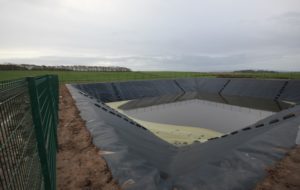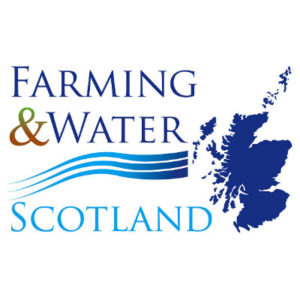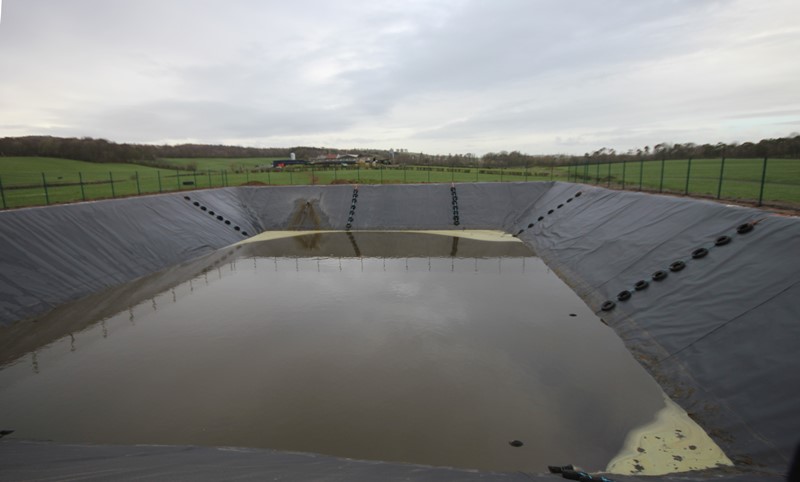Slurry lagoons – more than just a hole in the ground
6 February 2019The high and above average rainfall during winter 2017 highlighted the need for extra slurry storage across the SW of Scotland.
Although we have a high livestock density it is not matched by having adequate slurry storage. The current Agri-Environmental Climate Scheme targets specific areas and holdings for grant aid (to a maximum award of £30,000) towards increasing on-farm slurry storage facilities. Many farmers who have already secured funding have opted to construct a lined slurry lagoon – a less costly option than above-ground or concrete underground stores.
We are running a series of events for farmers and building contractors within SW Scotland to explore how best to achieve improved slurry storage capacity.
These events will focus on:
- Making use of a farm waste management plan to calculate storage requirements
- Reducing clean water runoff into slurry storage
- Site selection consideration
- Meeting planning and building warrant regulations
- SEPA requirements
- Making use of grant funding
Having sufficient and well maintained on-farm slurry storage to cope with up to 6 months storage will allow farmers to target organic fertiliser applications to coincide with crop nutrient requirements as opposed to when storage capacity dictates. By targeting application to crop growth needs, nitrogen uptakes can be increased and reliance on artificial fertilisers reduced. Other benefits will include reduced risk of diffuse pollution to the water environment and to soil structure from accessing ground in sub-ideal conditions.
When considering a lined slurry lagoon, there are some factors to take into account including site situation, building specifications e.g. for safety reasons all lagoons need to be fenced to prevent access to people and livestock and accessing storage – getting slurry in and out efficiently. Lagoon liners must be lined with a proprietary liner which meets the requirements of The Control of Pollution (Silage, Slurry and Agricultural Fuel Oil) regulations 2003 as amended. For any new or upgrades made to existing slurry storage, an engineer’s certificate must be obtained from a suitably qualified civil / structural engineer and building warrants must be obtained where applicable.
Join us at an event local to you to learn more. Full details for each event is available through the links below:
- Lanark – 21 Feb
- Ayrshire – 22 Feb
- Dumfries – 25 Feb
- Campbeltown – 28 Feb
- Stranraer – 1 March
- Stirling – 5 March
If you can’t make these meetings and have questions about slurry storage then call our helpline on 0300 323 0161 or email advice@fas.scot.
Sign up to the FAS newsletter
Receive updates on news, events and publications from Scotland’s Farm Advisory Service

